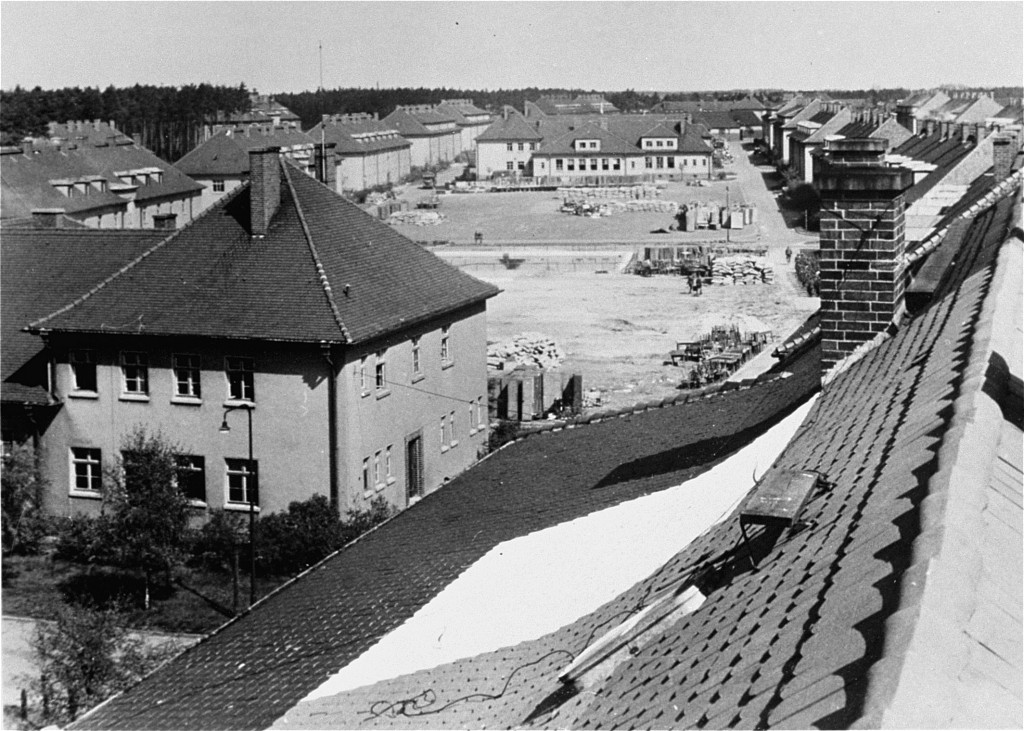
Bergen-Belsen Displaced Persons Camp
For the Jews who survived the Holocaust, the end of World War II brought new challenges. Many could not or would not return to their former homelands, and options for legal immigration were limited. In spite of these difficulties, these Jewish survivors sought to rebuild their shattered lives by creating flourishing communities in displaced persons camps in Germany, Austria, and Italy. In an unparalleled six-year period between 1945 and 1951, European Jewish life was reborn in camps such as Bergen-Belsen.
Bergen-Belsen, the largest displaced persons (DP) camp in Germany, was the center of Jewish DP political and social activity in the British zone of occupation. As home of the most prominent and vocal community in the “She'erit Ha-Peletah” (The Surviving Remnant ), Bergen-Belsen DP camp became synonymous with the plight of the Jewish DPs in their conflict with the British.
Bergen-Belsen DP camp was established in July 1945 in a former German army camp near the concentration camp Bergen-Belsen. After liberating the concentration camp on April 15, l945, the British burned the camp barracks as a health precaution. Though the British attempted to name the new camp Hohne, the survivors refused to relinquish the name Bergen-Belsen. After November 1945, when the British allowed the segregation of Jews into their own portion of the camp, the Jewish inhabitants of Bergen-Belsen comprised the only exclusively Jewish DP population in the British zone.
In 1946, the DP camp housed over 11,000 Jews. Though Bergen-Belsen was the only all-Jewish camp in the British zone of Germany, the camp's survivors struggled with the British before securing an exclusively Jewish community. In 1946, the British army prevented any more DPs from entering Bergen-Belsen, and, in March 1946, they transferred administration of the camp to the United Nations Relief and Rehabilitation Agency (UNRRA).
Politically active from the outset, Bergen-Belsen survivors formed a camp committee just three days after liberation. Camp leader Josef Rosensaft also formed the first Central Committee of Liberated Jews in Bergen-Belsen in June 1945. Under the stewardship of Rosensaft and Norbert Wollheim, the Committee grew into an organization that lobbied the British on behalf of the DPs' political, social, and cultural aims, including the right to emigrate to British-controlled Palestine.
Bergen-Belsen DPs, like other Jewish DPs in the British zone, protested the United Kingdom's refusal to allow Jews into Palestine. The Haganah (Jewish military force in Palestine) sent in agents who held clandestine military training in Bergen-Belsen in December 1947 in order to prepare DPs for immigration to Palestine. British authorities forbade free departure from the camp until 1949.
Survivors of the Bergen-Belsen concentration camp organized political, cultural, and religious activities just weeks after liberation. Bergen-Belsen was the site of an astounding rebirth of family life, with an average of 20 weddings per day. After the first few months of liberation, 2,000 children were born in the camp. The DPs founded an elementary school as early as July 1945, and by 1948, 340 pupils attended the school. A high school, which was staffed partly by soldiers from the Jewish Brigade (the Palestinian Jewish unit of the British Army) was established in December 1945. The DPs also provided education for the children of Bergen-Belsen. There was a kindergarten, an orphanage, and a yeshiva (a religious school). The Organization for Rehabilitation through Training (ORT) vocational training schools organized occupational education.
The DPs of Bergen-Belsen also created and maintained a lively cultural life and published Unzer Shtimme (Our Voice), the main Jewish newspaper of the British zone. By the middle of 1950, the camp was nearly empty; the last DPs left in August 1951. The majority of Bergen-Belsen's DPs emigrated to Israel. Many others went to the United States and Canada.
Critical Thinking Questions
- What challenges did survivors face in the DP camps?
- What challenges did the Allies face in establishing and supervising DP camps?
- What responsibilities do (or should) other nations have regarding refugees from war and genocide?

